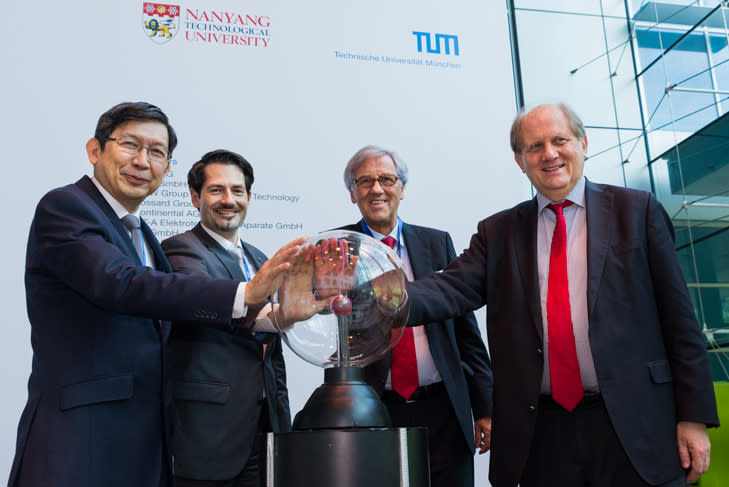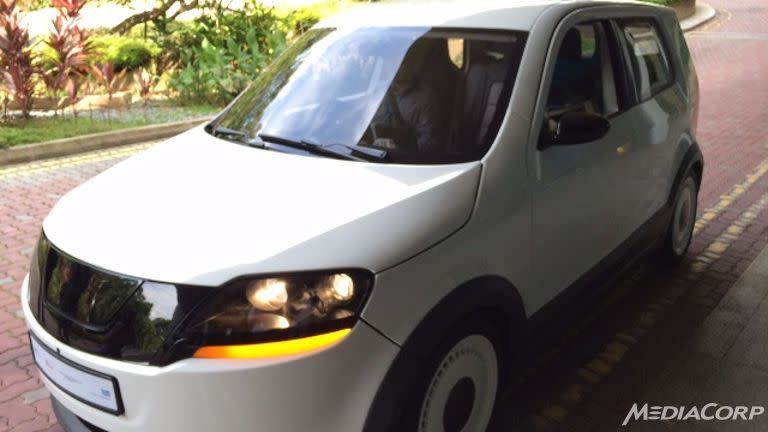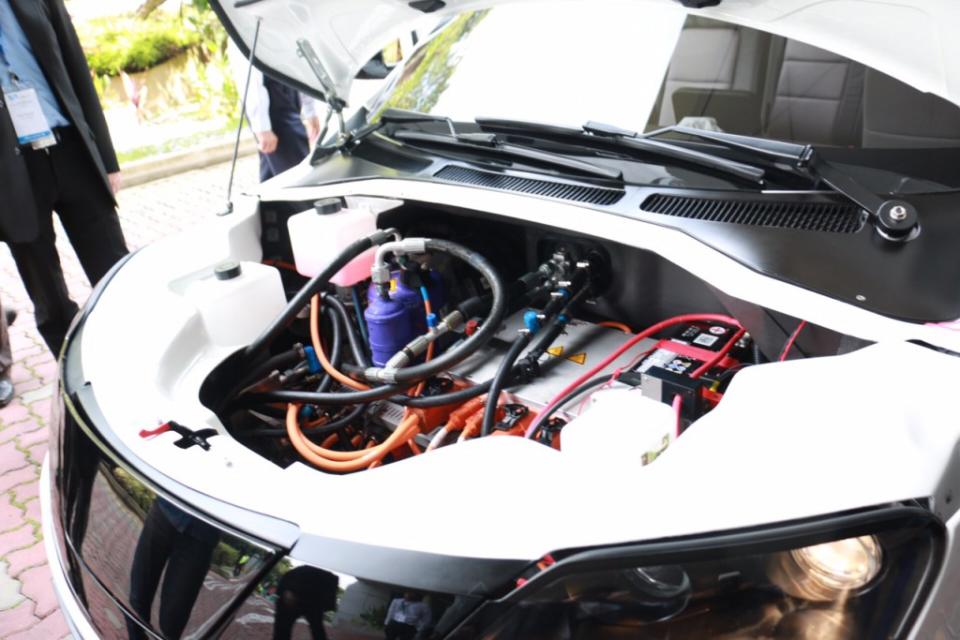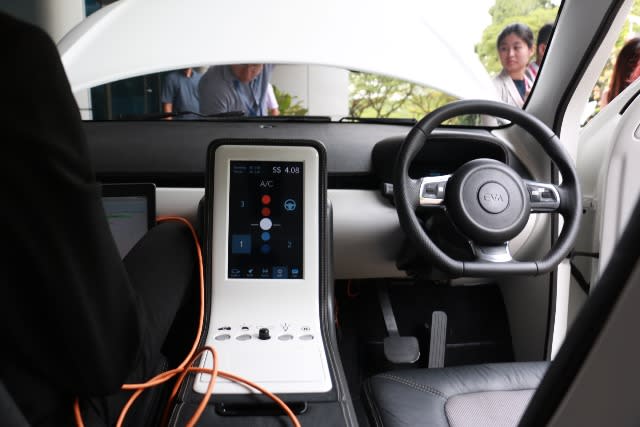Singapore May Have Electric Taxis In The Future; This Is What They Will Look Like

This article originally appeared on Vulcan Post.
Electric cars are the future of transport. With limitations on the amount of fuel resources we have, the environmentally friendly option is much more feasible. That said, electric cars have limitations too: they need to be frequently charged, and there isn’t much infrastructure to support them as of yet.
But the future of Singapore’s taxi industry may be electric: a car named EVA was officially launched on April 24, marking a step towards that future.
Bearing a similar name to the adorable robot from Disney’s Wall-E, EVA is the first electric car to be designed, developed, and manufactured locally, according to a Channel NewsAsia report. It was created by TUM CREATE (Campus for Research Excellence And Technological Enterprise) — a collaboration between Nanyang Technological University (NTU) and Technische Universität München (TUM).
Image Credit: Channel NewsAsia
Interestingly enough, it was designed to function as a taxi, and was developed with user studies and observational analysis on consumer behaviour in Singapore’s taxi industry. With taxi drivers spending long hours on the road — much longer than the average driver — it’s safe to say that EVA was designed to be more sturdy and efficient on the road as compared to traditional cars.
According to developers, the car has tackled charging problems by allowing drivers to cover up to 200km with just 15 minutes of charging. A press release revealed that taxis cover an average of 520km a day, which means that the car would need just two to three charges daily. Taxis currently take up 3 per cent of the vehicle population in Singapore.
“The challenges surrounding fast charging include the high electricity currents needed and the heat that is consequently generated in the battery pack during the recharging process,” the press release stated. “Our engineers have designed an innovative concept for more effective thermal management of the battery cells that targets to extend the pack’s lifespan.”
Image Credit: Channel NewsAsia
EVA is also made with a carbon fibre-structured vehicle, has a maximum speed of 111 km/h, and has inductive charging technology built in, allowing it to charge upon contact.
According to NTU President Professor Bertil Andersson, EVA is a good example of future electro-mobility and its possibilities.
“NTU is at the forefront of sustainability research and we had identified electro-mobility as one of the solutions necessary to tackle climate change. Our success in building an electric car for the tropics is a big step forward in realising our vision for a more sustainable future for everyone,” said Prof Andersson.
“Equally significant is that EVA is the first car ever designed, developed, and manufactured locally. While Singapore is not an automotive manufacturing country, the nation’s economy will definitely benefit in the long run through technology transfer. We are now among the leaders in electro-mobility systems and will be able to offer our knowledge and services to the automotive industries in this region.”
Image Credit: Channel NewsAsia
As EVA was designed specifically for driving in Singapore, it also has an energy-efficient air conditioning system, as a significant amount of energy in our vehicles are consumed by air conditioning. The climate controls — along with in-car entertainment, booking, and digital payment systems in the taxi — are also linked via the infotainment system, which passengers will be able to access via mobile devices. This means that you will be able to turn up the temperature in the taxi, or turn down the volume of the radio, all via your smartphone.
“The innovative energy efficient air conditioning solutions deployed in EVA, like its new energy-efficient compressor technologies, can be adopted in both current and future vehicles to reduce their carbon footprint,” said Professor Lam Khin Yong, NTU’s Chief of Staff and Vice President for Research.
Image Credit: Channel NewsAsia
NTU is also reportedly looking into other supporting technologies, such as Vehicle-to-Everything (V2X) technology, which looks into equipping cars with devices that can talk to traffic infrastructure and other cars.
If all taxis looked like EVA, it’s safe to say that it’s going to be a sweet future we’re looking at.
Also Read: Singapore’s Regulations On Third-Party Taxi Booking Apps And How It Affects Innovation
The post Singapore May Have Electric Taxis In The Future; This Is What They Will Look Like appeared first on Vulcan Post.

 Yahoo Finance
Yahoo Finance 




